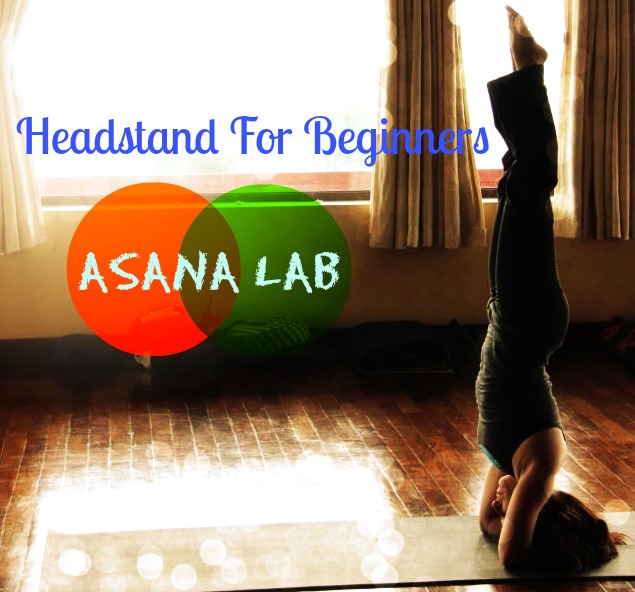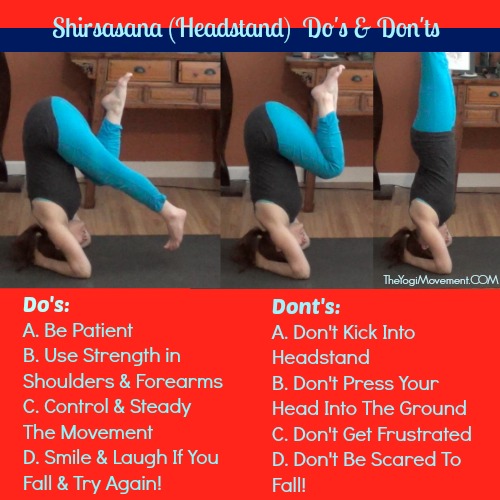The hardest thing about growing up in a western society is that we want instant gratification. Everyone wants to take a pill to feel better, or learn a trick to get into a posture, but there are honestly no tricks in yoga. I remember one of my teachers (Lewis Rothlein) saying:
Let your goal not be to be good at yoga. Let it be to do yoga. Being good at yoga will happen; it is a side effect of doing yoga, and doing yoga regularly. But being good at yoga is always secondary. If your main goal is to be good at yoga, you are not really doing yoga.
Progress in postures comes from consistent practice, and that’s the only trick. I had to learn this the hard way. In the past I would do extra stretches to try to open my body for a posture, but this constant attachment only created frustration. My body and mind became addicted to the struggle. Rather than listening and creating awareness I was pushing, pulling, and tightening. I should have been breathing and listening to what was going on inside. What was going on with my hips? Where are they tight? Where do I need to let go?
When the intention for everything you do is based on getting into a posture, yoga knows this. Eventually, you’re just going to have to surrender. It’s only when you completely accept where you are in the posture, and that the intention is based solely on finding inner peace and letting go, that you will find abundance and growth. Remember: Yoga is about non-attachment.
I posted a teaser video about “Headstand For Beginners” a few days ago from Instagram < Check it out here > , and this brought up a few questions from people about issues with headstand that I wanted to cover. You can also follow me on Instagram here <—-
Most people want to jump up into headstand, but getting into headstand should really be done through strength and control. The reason for this is that you do not want to put any weight on your head. The weight should be in your shoulders and forearms, and the head should barely be touching the ground.
Here are a few of my tips (not tricks):
A. Lift Into Headstand. Don’t Kick.
Although you’re balancing in headstand, it’s deceiving because headstand is a posture more about strength and control than balance. In my classes I see a lot of people trying to kick up and balance into headstand. Even when I demonstrate how to lift, or discuss how dangerous it is on your neck to try to kick and balance on your head, they still do it. This is that instant gratification thing I was talking about.
I addressed in my video ways that you can do headstand in steps. By doing this, you build small amounts of strength and control along the way. This not only helps you in headstand, but you need to build control and strength for every yoga posture. It’s only when you feel strong enough to hold yourself up without putting any weight onto your head that you should be holding headstand. This video gives tips on how to go into headstand while building that strength so that you are always protecting yourself.
B. The only way to get over your fears is by confronting them:
The main thing I hear from people who are working on headstand is their fear of falling. Falling is not as scary as you think. It can actually be exciting because you realize it’s not so bad after it happens. One of the best practices in yoga is to recognize your fears and then put yourself in those situations so that you can overcome them. Babies need to learn to walk, and they fall all of the time in the beginning. As they continue to practice, they get better and fall less. Think about yoga as taking baby steps. Sometimes you might fall, but it you don’t, then how will you learn where you need to be?
In headstand, you can lift your legs to a certain point, and stay there for a few days or even weeks until you’re ready to lift your legs a little higher. You’ll gain patience, confidence, and become empowered because you’ll get over your fears and realize that anything is possible.
C. The only posture to get into headstand is headstand
I talked a little before about how there are no tricks to yoga postures, but just consistent practice. I was asked what postures could help with getting into headstand, so that really got me thinking. Strength postures are tougher for me to teach than the flexibility ones mainly because the strength postures have always come naturally to me.
I was excited about this question though because it gave me a great challenge and made me really pay attention to headstand. After I was asked what postures could help, I spent some time working in headstand trying to pinpoint where the strength and control was coming from, and what I found is that it is all upper body. The strength is in the shoulders, arms, back, and chest. Many people think that the core or abs need to be really strong, and of course you need to have strength there, but it’s secondary compared to the upper body.
It should also be noted that inversions are part of the closing postures, so all of the work you do in the postures leading up to this also help to build strength and control for headstand.
Below are my tips on how to build and utilize strength and control in your body to make headstand work for you:
In order to lift: (all of this info is in the video as well)
- The forearms need to press into the ground
- Push strong through the arms and shoulders as your shoulders press away from the ears and slide down the back
- As your shoulders come away from the ears the head slightly lifts off of the ground – THIS IS MOST IMPORTANT!
- Put your awareness at the chest and upper back, and use the strength in these areas to begin to lift you off the ground (At first, even just getting to a point of your tip toes just skimming the ground)
- Engage the stomach muscles (focus on mula bandha) and squeeze the legs together
- Start by bending one knee in, and squeezing it into your chest
- Bring your hips forward and tilt just enough to lift the second foot off the ground.
- Just try to balance with one knee into the chest, and the other foot off the ground.
- Eventually you’ll squeeze both knees in and lift with the legs squeezing together.
- It’s the strength of the upper body along with: squeezing the legs, pointing the toes, and keeping the body tight and firm that creates the control, which in turn creates the balance
In Yoga Mala, Pattabhi Jois says: “Merely putting the head down and legs up, and then standing upside down is not Shrishasana; very simply this is wrong. The entire body must stand upside down on the strength of the arms alone. If the full body burden is carried by the head, the circulation of the blood from the heart, which is flowing properly to the limbs, will be prevented from making its way to the subtle nadis in the crown of the head, which is pressed on the floor.”
Remember:
Just one breath at a time.
Work up to holding 50 breaths.
Always Take Balasana (child’s pose) for 15 breaths when you’re done
If you get frustrated, STOP. Try again tomorrow.
Don’t compromise your breath and your peace
PIN IT
Did this help? Where do you get stuck in headstand? Have any questions? Please email me or ask in the comments below! Please Pin or Share if you think this might help someone!



I love that beautiful Chinese desk behind you. Where did you get it?
My parents gave it to me! I’m so lucky because it makes the perfect alter.
I’ve always been afraid of the headstand. I love this post because it is very informative and makes the headstand seem not so intimidating. Thank you for all of your great posts, Monica. You are so inspiring and such a great teacher. I’m so happy to have found you!
You’re so sweet Angela! What a nice compliment. My goal with this blog was to make yoga seem inviting. Although amazing, I think it can be intimidating to see a lot of videos and photos of people doing really advanced yoga postures. I want to show that anyone can do anything, but let’s start at the beginning. So, I’m really glad you got that feeling from this post. Sorry I’ve missed you the last few weeks, but I’ll see you soon. xoxo
Thank you for this article! I had a big problem with headstands, I just wasnt able get my foot out of floor, after your video, it was first time I managed that 🙂
Hi Donika! You have no idea how thrilled I am that you were able to progress in your headstand! Thanks for watching & reading! Keep practicing & look forward to connecting again 🙂
Spot on with this write-up, I truly believe this web site needs a
lot more attention. I’ll probably be returning to see more,
thanks for the advice!
SWEET! Is there anything you would love to see a post about that you struggle with? I can’t promise I’m an expert, but I’d love to help if I can 🙂
Thank you so much Alison! Look forward to connecting more with you!
Sweet! Me too… sometimes I can even close my eyes!
thanks for the info. this is a great help for me. i am struggling doing headstand on my own for over a year. Fear of falling was my worst nightmare. Now it’s been a week of doing headstand on my own. What a great accomplishment 🙂
That’s amazing Dara! I’m so excited for you 🙂
Hey Dara! You are amazing & I knew you could do it. it’s just a little bit of bravery and small steps 🙂
You rock!
This is the most motivating and helpful headstand how-to page ever! Your Do’s and Don’ts were perfect. I just tried the pose out and did it!!! THANK YOU THANK YOU!!
Hey Sophie! You’re welcome! So glad to hear it helped you. Big love! <3